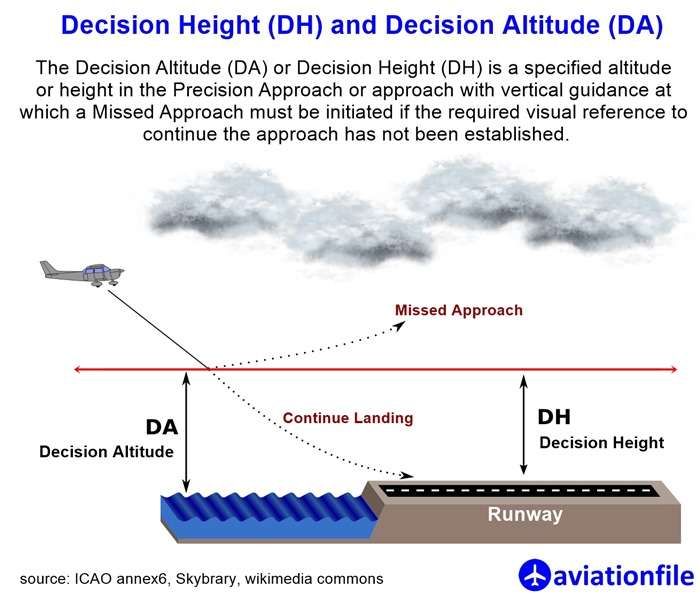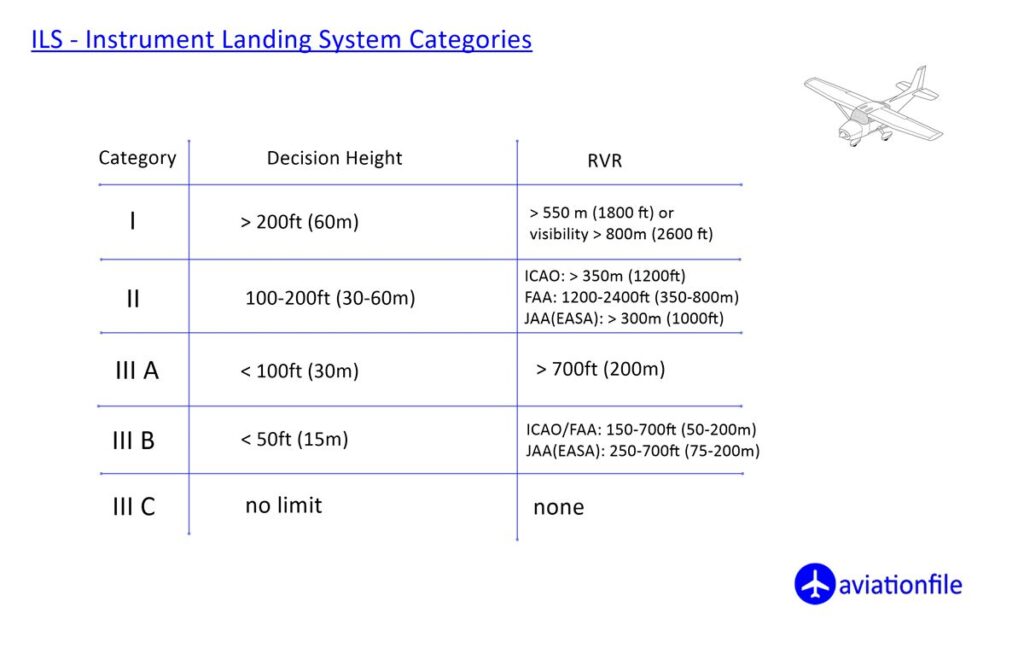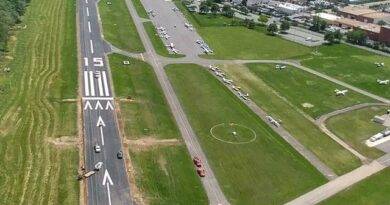Understanding Decision Height (DH) and Decision Altitude (DA) in Aviation
In aviation, safety is paramount, and pilots must be well-prepared for every stage of a flight. One of the critical aspects of landing an aircraft is knowing the Decision Height (DH) or Decision Altitude (DA). These terms are used during approaches to airports when pilots rely on instruments rather than visual cues to land.
Definition
The Decision Altitude (DA) or Decision Height (DH) is a specified altitude or height in the Precision Approach or approach with vertical guidance at which a Missed Approach must be initiated if the required visual reference to continue the approach has not been established. (ICAO Annex 6)
What is Decision Height/Decision Altitude?
Decision Height (DH) refers to the specific height above the ground (usually in feet) at which a pilot must make a critical decision during an approach. Decision Altitude (DA) is the same concept but is measured in terms of altitude above sea level.
When a pilot reaches the DH/DA, they must decide whether:
- The runway or approach lights are visible and they can safely land.
- Visibility is too poor, and they need to initiate a missed approach.
In simple terms, DH/DA is the “point of no return” during a landing approach. It is the moment when the pilot must either commit to landing or abort and try again.

Does the DH/DA Value Change?
Yes, the DH/DA value can change depending on several factors, including:
- Type of approach: Precision approaches, such as Instrument Landing System (ILS), typically have a lower DH/DA compared to non-precision approaches.
- Weather conditions: Poor visibility, fog, or heavy rain may require a higher DH/DA, as the pilot needs more time to react if they can’t see the runway.
- Airport equipment: Airports with advanced navigation aids can allow for a lower DH/DA, while those with fewer or outdated instruments may require a higher DH/DA.
- Aircraft category: Larger aircraft often have different DH/DA limits compared to smaller planes due to their size, speed, and maneuvering requirements.
When Does DH/DA Change?
- Low visibility operations: In fog, rain, or snow, airports may raise the DH/DA to increase safety margins.
- Aircraft and crew capability: Some pilots and aircraft are certified for Category II or III approaches, which allow lower DH/DA limits because they use more sophisticated technology.
- Type of approach: Different approach types like ILS CAT I, II, or III have distinct DH/DA values. Category I approaches may require higher DH/DA limits, while Category III allows for much lower values, sometimes even allowing automatic landings without a visual reference.
Relationship Between Decision Height/Altitude and ILS Categories
The Decision Height (DH) or Decision Altitude (DA) is directly influenced by the Instrument Landing System (ILS) category being used during an approach. ILS approaches are classified into three main categories based on the precision and the required DH/DA:
- Category I (CAT I) typically has a DH/DA of around 200 feet above ground level (AGL) and is suitable for less severe weather conditions, requiring pilots to have sufficient visual reference for landing.
- Category II (CAT II) allows for a DH as low as 100 feet AGL, providing more precise guidance and permitting landings in lower visibility conditions.
- Category III (CAT III) is designed for extremely low visibility and is further divided into sub-categories like IIIa, IIIb, and IIIc. In CAT IIIb, the DH can drop to 50 feet AGL, while CAT IIIc has no DH, allowing for fully automated landings without any visual input from the pilot.
The reduction in DH/DA in higher ILS categories is possible due to advanced technology such as radio altimeters and sophisticated ground-based navigation systems (Flight Training Hub)(SKYbrary)(Homepage).

Why is Decision Height/Decision Altitude Important?
DH/DA plays a crucial role in flight safety. It ensures that the pilot has enough time to abort a landing safely if conditions are not favorable. A well-defined DH/DA prevents dangerous situations, such as attempting to land without sufficient visibility of the runway.
Additionally, it helps pilots avoid Controlled Flight Into Terrain (CFIT), one of the leading causes of aviation accidents. By setting this altitude, pilots are given a structured point to re-evaluate the approach, preventing last-minute decisions that could lead to crashes.
Conclusion
Decision Height (DH) and Decision Altitude (DA) are essential safety measures in aviation. They ensure that pilots have clear guidelines during poor weather or low visibility conditions. While the values can change based on several factors, their purpose remains the same: to ensure safe landings and minimize risks. Understanding and adhering to DH/DA keeps both passengers and crew safe, making it a critical part of modern aviation.


